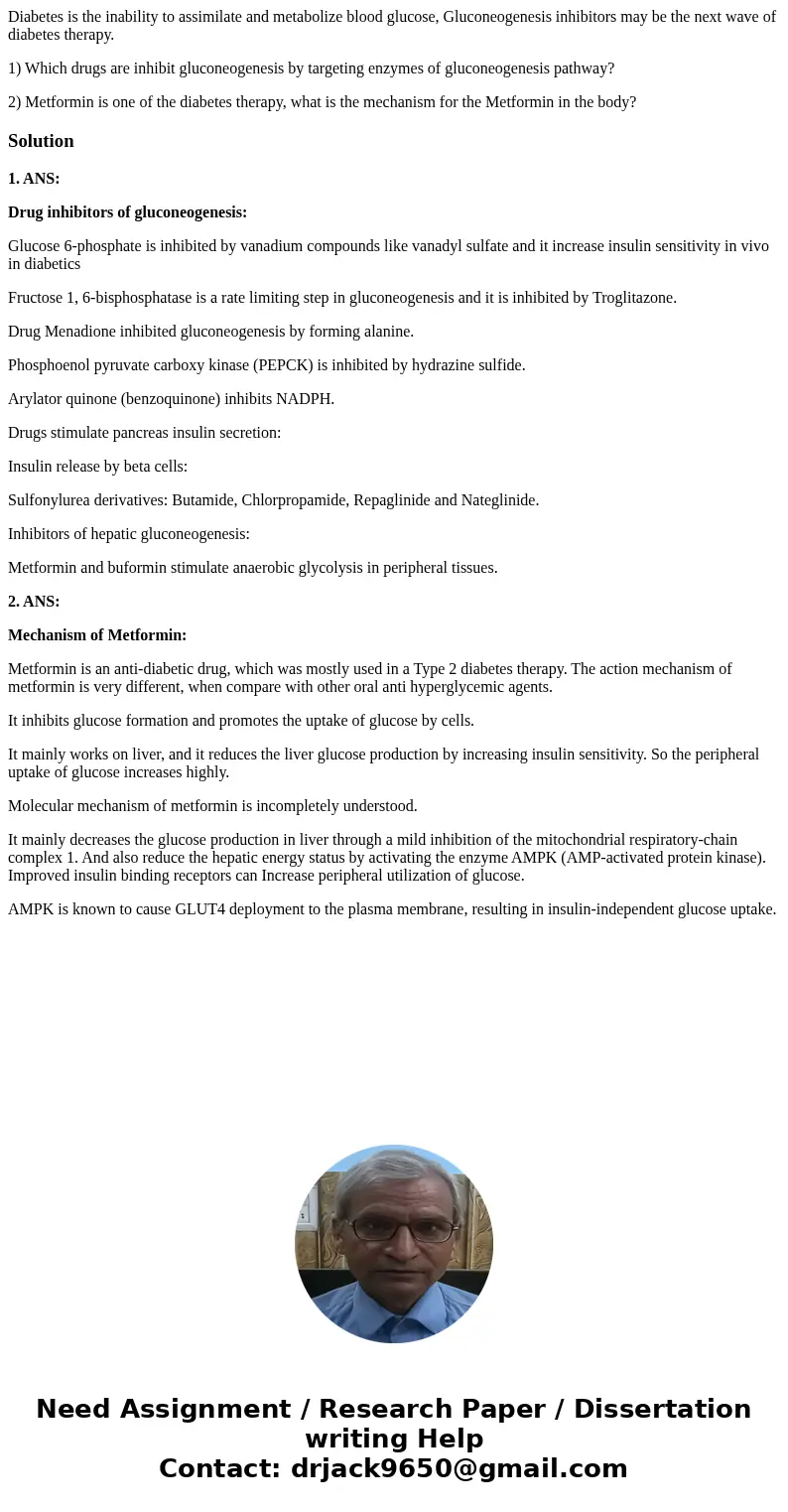Diabetes is the inability to assimilate and metabolize blood
Diabetes is the inability to assimilate and metabolize blood glucose, Gluconeogenesis inhibitors may be the next wave of diabetes therapy.
1) Which drugs are inhibit gluconeogenesis by targeting enzymes of gluconeogenesis pathway?
2) Metformin is one of the diabetes therapy, what is the mechanism for the Metformin in the body?
Solution
1. ANS:
Drug inhibitors of gluconeogenesis:
Glucose 6-phosphate is inhibited by vanadium compounds like vanadyl sulfate and it increase insulin sensitivity in vivo in diabetics
Fructose 1, 6-bisphosphatase is a rate limiting step in gluconeogenesis and it is inhibited by Troglitazone.
Drug Menadione inhibited gluconeogenesis by forming alanine.
Phosphoenol pyruvate carboxy kinase (PEPCK) is inhibited by hydrazine sulfide.
Arylator quinone (benzoquinone) inhibits NADPH.
Drugs stimulate pancreas insulin secretion:
Insulin release by beta cells:
Sulfonylurea derivatives: Butamide, Chlorpropamide, Repaglinide and Nateglinide.
Inhibitors of hepatic gluconeogenesis:
Metformin and buformin stimulate anaerobic glycolysis in peripheral tissues.
2. ANS:
Mechanism of Metformin:
Metformin is an anti-diabetic drug, which was mostly used in a Type 2 diabetes therapy. The action mechanism of metformin is very different, when compare with other oral anti hyperglycemic agents.
It inhibits glucose formation and promotes the uptake of glucose by cells.
It mainly works on liver, and it reduces the liver glucose production by increasing insulin sensitivity. So the peripheral uptake of glucose increases highly.
Molecular mechanism of metformin is incompletely understood.
It mainly decreases the glucose production in liver through a mild inhibition of the mitochondrial respiratory-chain complex 1. And also reduce the hepatic energy status by activating the enzyme AMPK (AMP-activated protein kinase). Improved insulin binding receptors can Increase peripheral utilization of glucose.
AMPK is known to cause GLUT4 deployment to the plasma membrane, resulting in insulin-independent glucose uptake.

 Homework Sourse
Homework Sourse